Try these homemade dinner rolls once, and you’ll make them forever! Flaky, soft, and buttery, they’re an easy, delicious addition to any meal.

These homemade dinner rolls are a perfect addition to almost any meal. Flaky, soft, and buttery, they’re delicious alongside a humble bowl of soup or a full spread of Thanksgiving recipes. We even love them on their own with honey butter or jam!
My husband Jack started making these dinner rolls several years ago, and they’ve been a fixture in our rotation ever since.
We keep coming back to them because they’re so simple. You only need 7 basic ingredients to make this dinner roll recipe! If you’re new to baking, don’t worry. You can totally pull off these pillowy, golden brown rolls!
Jack’s making them for Thanksgiving this year, and I hope you will too. These soft dinner rolls are easy and delicious—I think you’re going to love them!
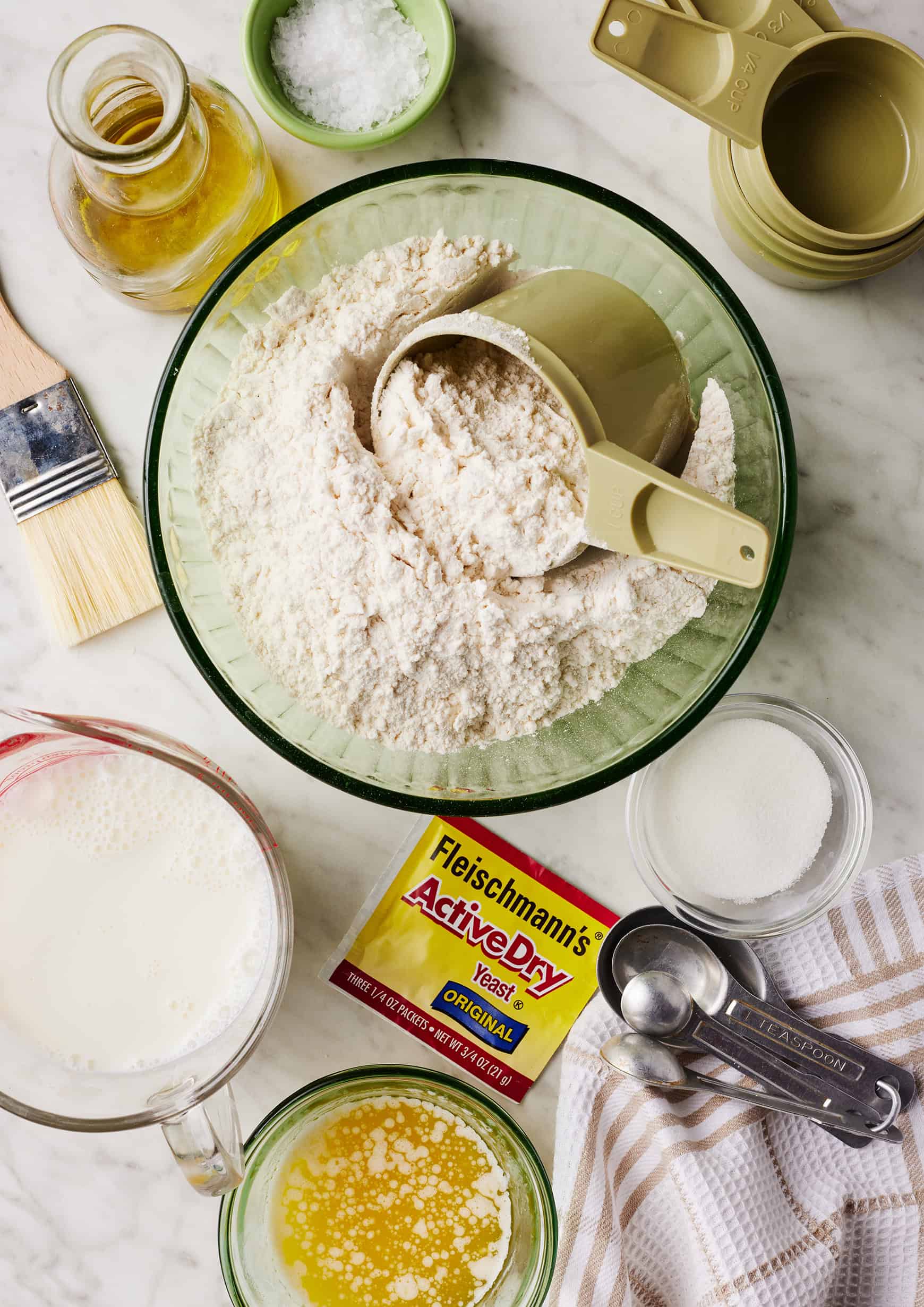
Dinner Roll Recipe Ingredients
You only need 7 ingredients to make this recipe:
- All-purpose flour – One of my best tips for making this dinner rolls recipe is to measure your flour carefully. If you have a kitchen scale, weigh it. If you don’t, spoon and level your flour instead of scooping it up with your measuring cup. You don’t want to accidentally add too much flour to the dough!
- Yeast – We typically use active dry yeast, but instant yeast will work here too. I still recommend proofing it with the milk and sugar before mixing up the dough.
- Milk – Any kind you like! Whole milk adds richness to the dough, which gives the rolls an especially soft and fluffy texture. That said, we’ve had great results with almond milk too.
- Sugar – It activates the yeast and gives the rolls a touch of sweetness.
- Melted butter – You’ll add some to the dough and brush more on top of the rolls.
- And sea salt – To round out the sweet and savory flavor.
You’ll also need olive oil for brushing. It prevents the dough from sticking to the bowl and baking sheet!
Find the complete recipe with measurements below.
Variation
Make the rolls vegan. Use your favorite non-dairy milk and vegan butter. Omit the salt if your vegan butter is salted.
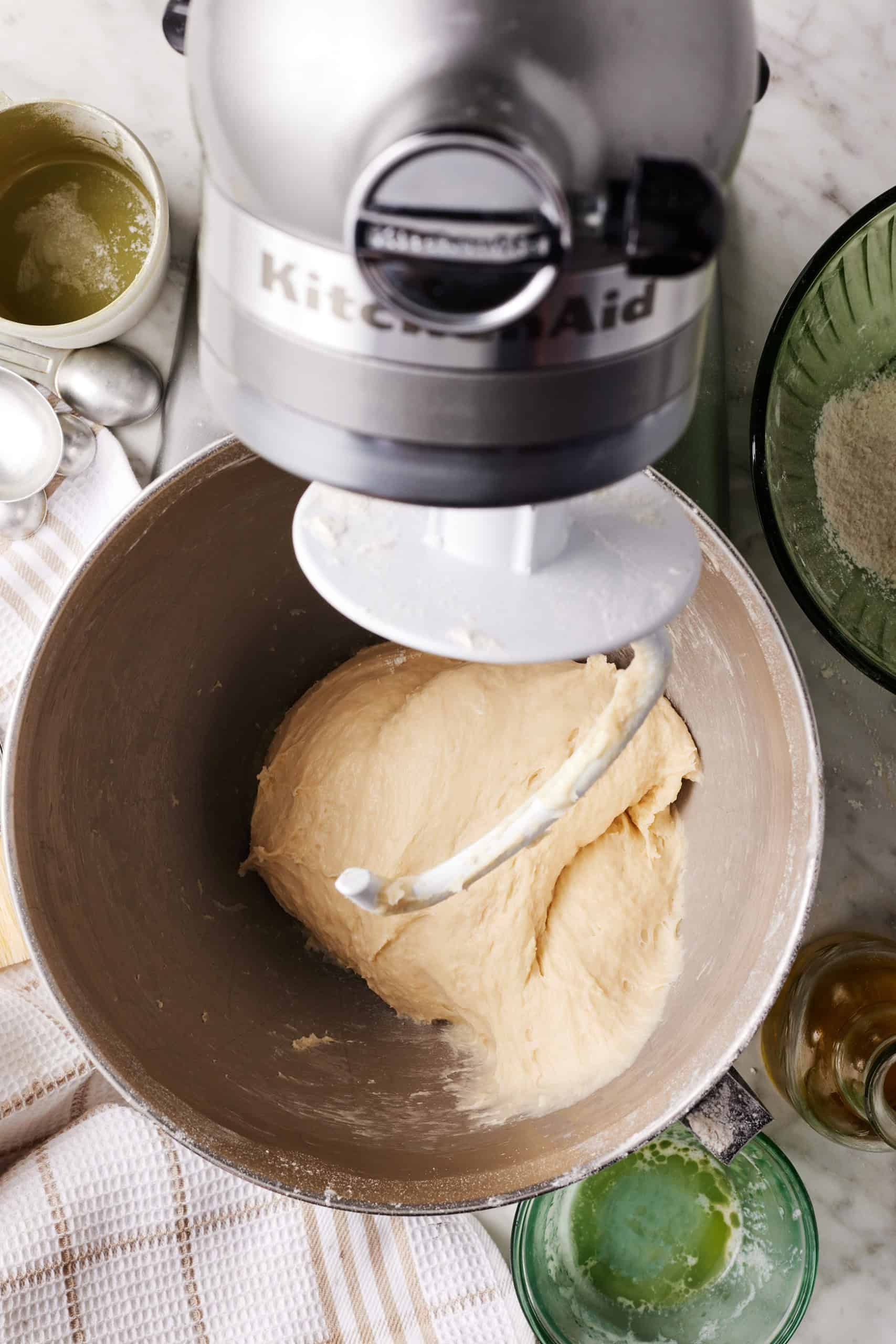
How to Make Homemade Dinner Rolls
You can find the complete dinner rolls recipe with measurements at the bottom of this post. For now, here’s a step-by-step overview of how it goes:
First, proof the yeast. Combine it with the warm milk and 1 tablespoon sugar, and let it sit for 5 minutes. After 5 minutes, the yeast should be foamy. If it’s not, discard the mixture and start again. There’s a good chance your yeast wasn’t fresh!
Next, make the dough. Add the foamy yeast mixture, the remaining sugar, melted butter, and salt to the bowl of a stand mixer fitted with a dough hook. Mix on low speed to combine.
Add the flour 1 cup at a time, mixing after each addition. Increase the speed to medium and mix until a cohesive, sticky dough forms around the hook, about 2 minutes. It should be pulling away from the bottom and slapping the sides of the bowl.
Transfer the dough to a floured work surface, and knead a few times to form it into a ball.
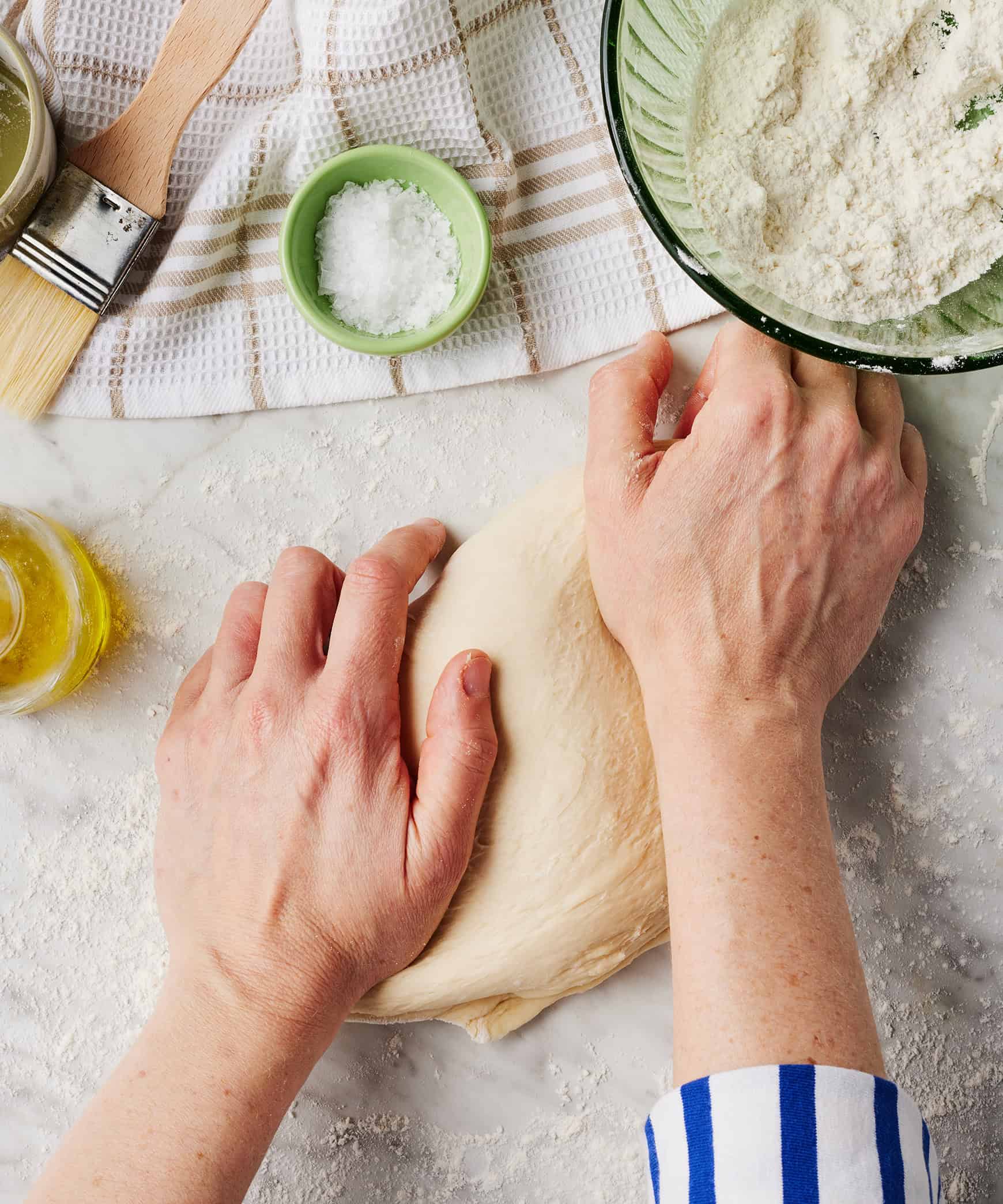
Then, rise! Place the dough ball in an oiled bowl. Cover the bowl with plastic wrap. Let the dough rise for 1 to 2 hours, or until it doubles in size.
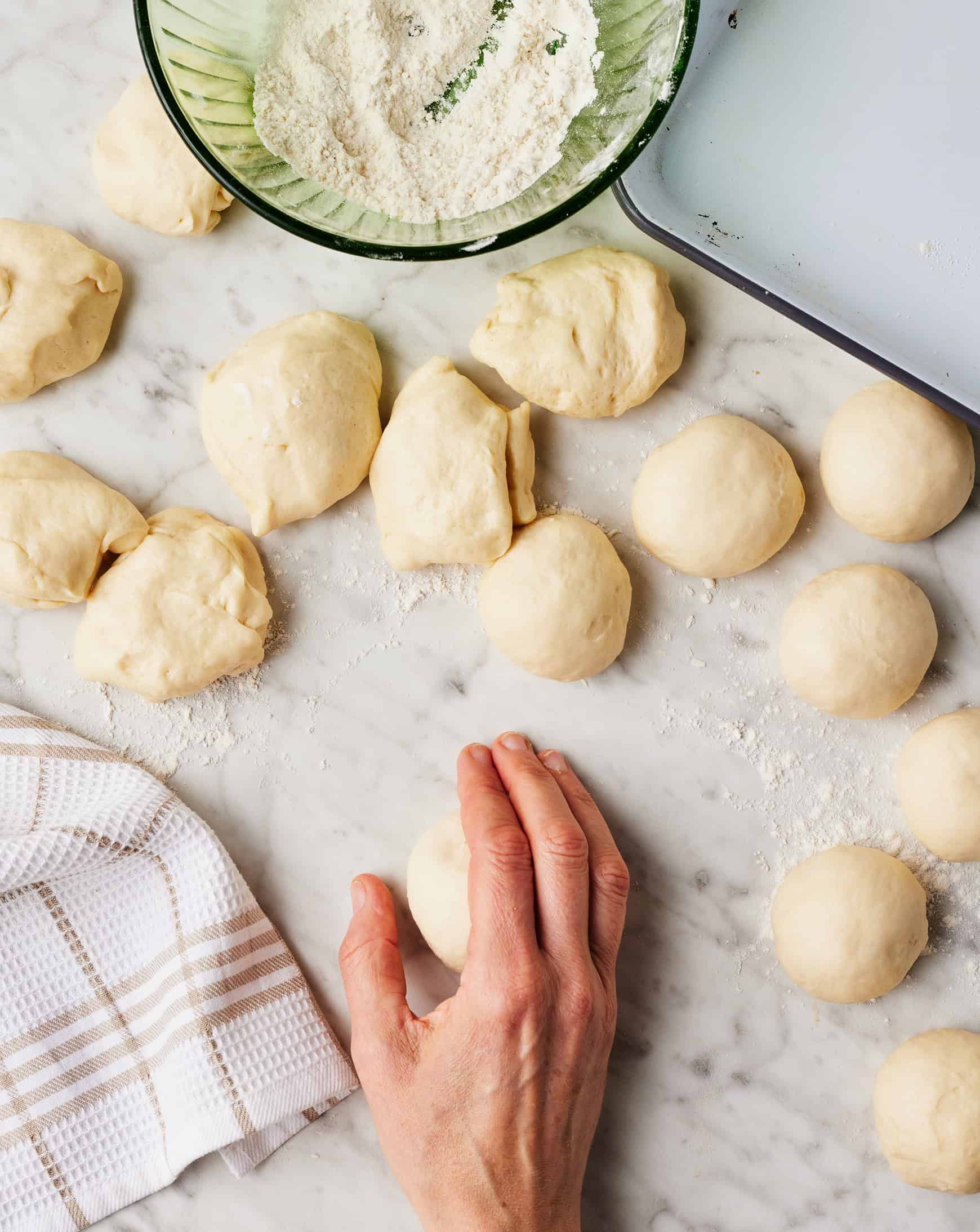
After the dough rises, shape the rolls. Divide the dough into 15 equal pieces, and shape each one into a ball by rolling it on the counter under your cupped hand. Transfer the balls to a greased quarter sheet pan or 9×13-inch baking dish. Dust with flour, cover with plastic wrap, and let rise for another hour, or until puffy.
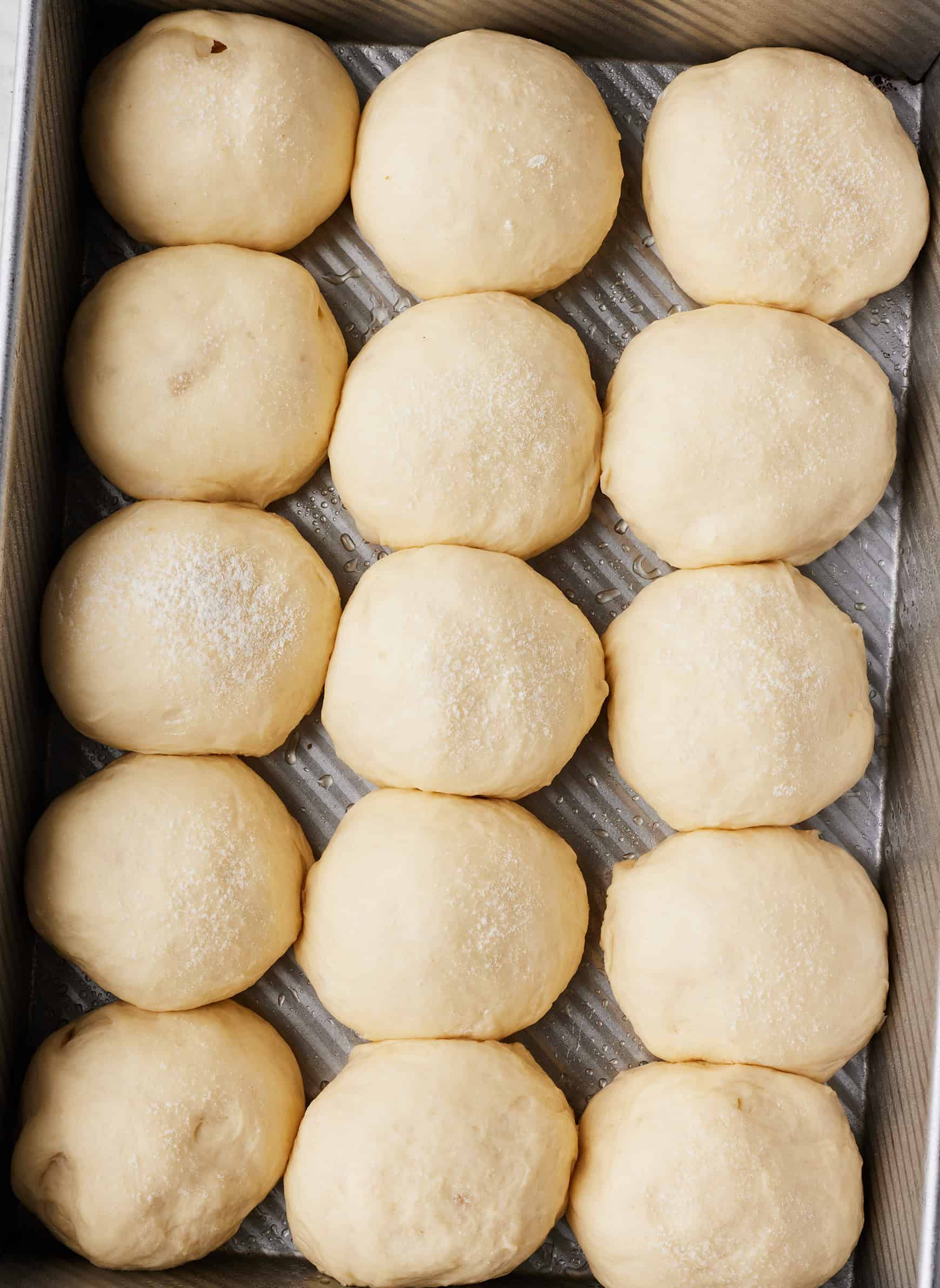
When the rolls are puffy, it’s time to bake! Place them on a low rack in a 350°F oven. Bake for 20 to 25 minutes, or until golden brown. Rotate the pan halfway through the bake time so that the rolls cook evenly.
Brush the warm rolls with butter. Serve immediately!
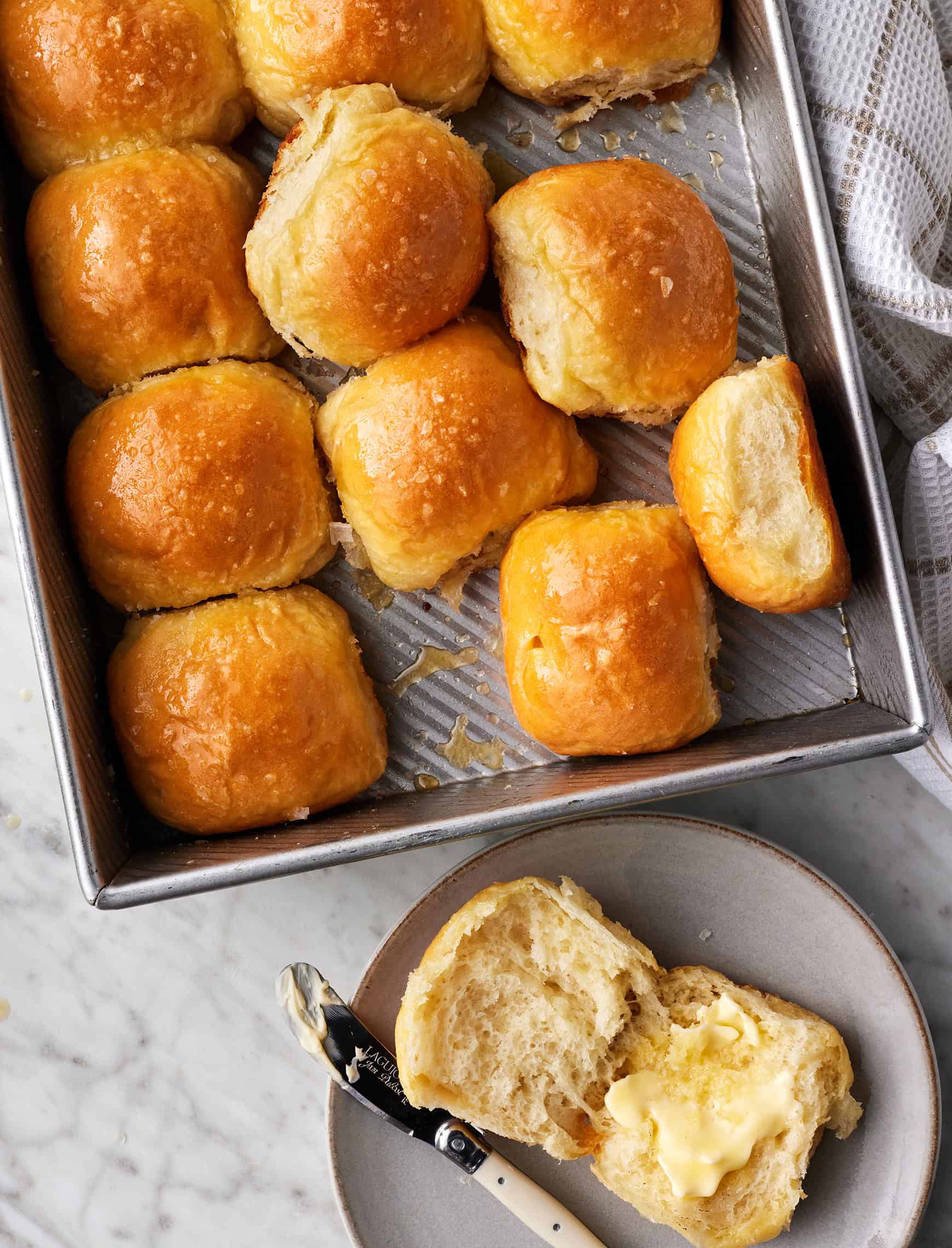
Tips for Making Homemade Dinner Rolls
- Make sure your yeast isn’t expired. Dead yeast=flat dinner rolls. No one wants those! Always check the expiration date on your yeast before you start baking. I also recommend proofing your yeast whether you’re using active dry or instant. It’s better to take the 5 minutes to proof it than to end up disappointed after hours of baking.
- Measure your flour accurately. It’s easy to scoop a cup of flour that’s packed too tightly, inadvertently using more flour than a recipe calls for. Weigh your flour whenever you can. If you don’t have a kitchen scale, use the spoon-and-level method for an accurate flour measurement.
- Warm the milk. Yeast loves warmth! To help activate it, warm your milk in the microwave for about 15 seconds before you proof the yeast. Whatever you do, don’t use cold milk straight from the fridge.
- Let the dough rise somewhere warm. Similarly, you’ll get the best rise if put the dough somewhere warm. We put ours on a sunny windowsill! A turned-off oven with the light on is a good option too.
Make-Ahead Options
- Prep the dough a day ahead. One day ahead, prepare the recipe up to the point of shaping the rolls. Place them in the baking pan and cover tightly with foil or plastic wrap. Instead of letting the rolls rise at room temperature, refrigerate them overnight. The next day, let them stand at room temperature for 1 hour before baking according to the recipe.
- Bake and freeze. These homemade dinner rolls freeze perfectly! Stash them in a freezer bag or airtight container in the freezer for up to 2 months. Let the frozen rolls thaw for a few hours at room temperature before wrapping them in foil, warming them in a 350°F oven, and serving. (I also like to thaw one roll at a time in the microwave for a quick side dish or snack!)
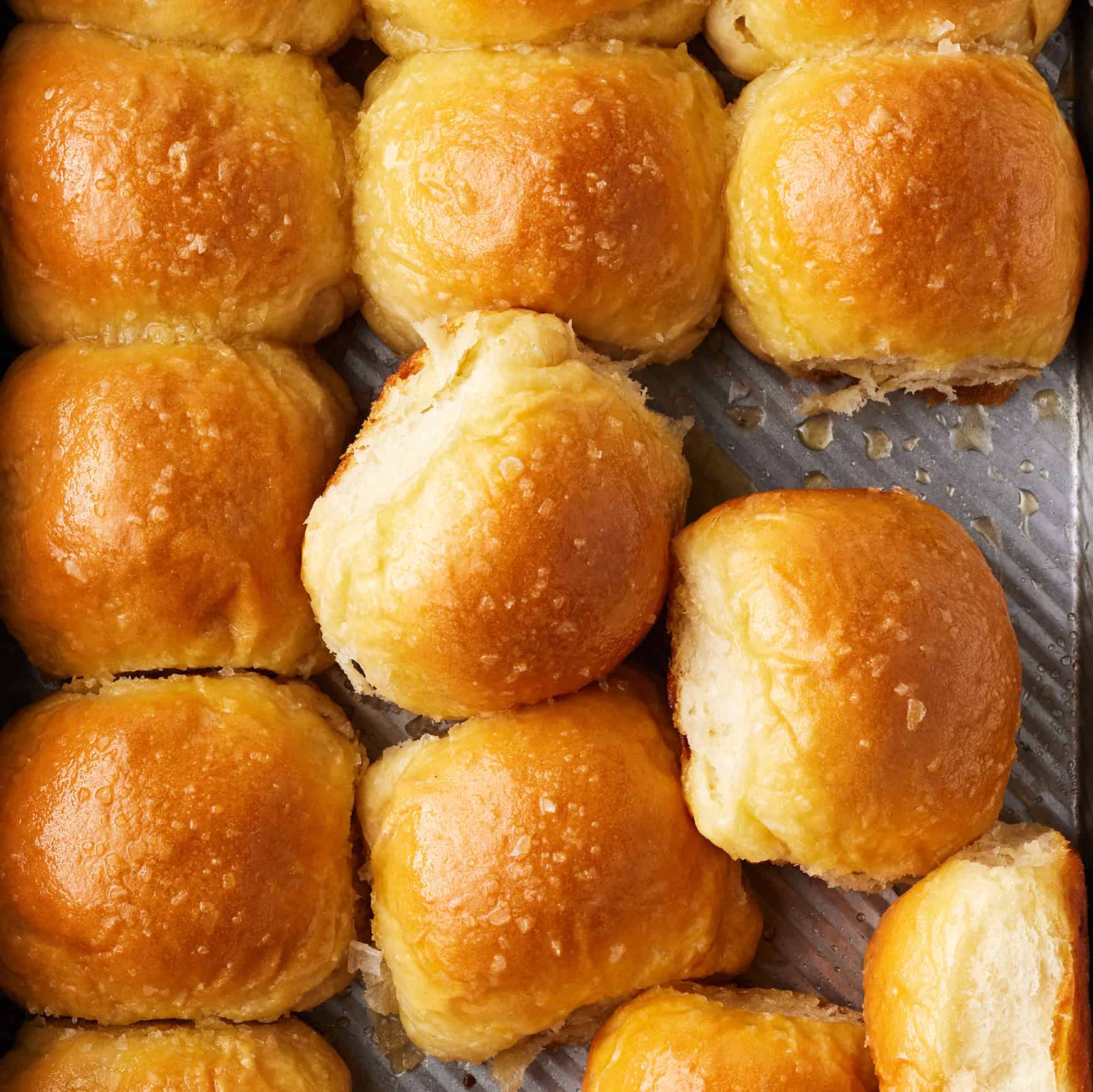
More Favorite Bread Recipes
If you love these homemade dinner rolls, try one of these easy bread recipes next:

Homemade Dinner Rolls
Serves 15
These easy homemade dinner rolls are flaky, soft, and buttery. They’re a delicious addition to any meal! Find make-ahead options in the blog post above.
For topping
- 2 tablespoons unsalted butter, melted
- Sea salt
Prevent your screen from going dark
-
In the bowl of a stand mixer fitted with a dough hook, stir together the milk, yeast, and 1 tablespoon of the sugar. Proof for 5 minutes, or until the yeast is foamy. If the yeast doesn’t foam, discard the mixture and start again with new yeast.
-
Add the remaining sugar, the melted butter, and salt to the bowl. Mix on low speed to combine, then add 1 cup of the flour and mix on low speed until mostly combined. Add another 1 cup of the flour and mix on low speed to combine, then repeat with the remaining cup of flour. Increase the speed to medium and mix for 2 minutes, or until a cohesive, slightly sticky dough forms around the hook. It should be slapping the sides of the bowl and pulling away from the bottom.
-
Transfer the dough to a lightly floured surface and knead a few times to form into a ball. The dough should be slightly sticky, but if it’s too sticky to work with, work in a little more flour. Brush a large bowl with olive oil and place the dough inside. Cover with plastic wrap and set aside to rise for 1 to 2 hours, or until the dough has doubled in size.
-
Brush a baking sheet or 9×13-inch baking dish with olive oil and set aside. Turn the dough out onto a clean work surface. Divide the dough into 15 equal pieces. Form each piece into a ball by rolling on the countertop with a cupped hand. Place each piece onto the baking sheet. Dust the tops with a very slight amount of flour to prevent sticking. Cover with plastic wrap and set aside for 1 hour, or until puffy.
-
Preheat the oven to 350°F and move an oven rack to a low position.
-
Bake the rolls for 20 to 25 minutes, or until golden brown, rotating the pan halfway.
-
Make the topping: In a small bowl, mix together the melted butter and a pinch of salt. Brush over the warm rolls and serve.
